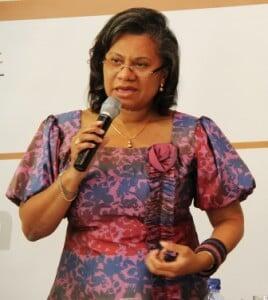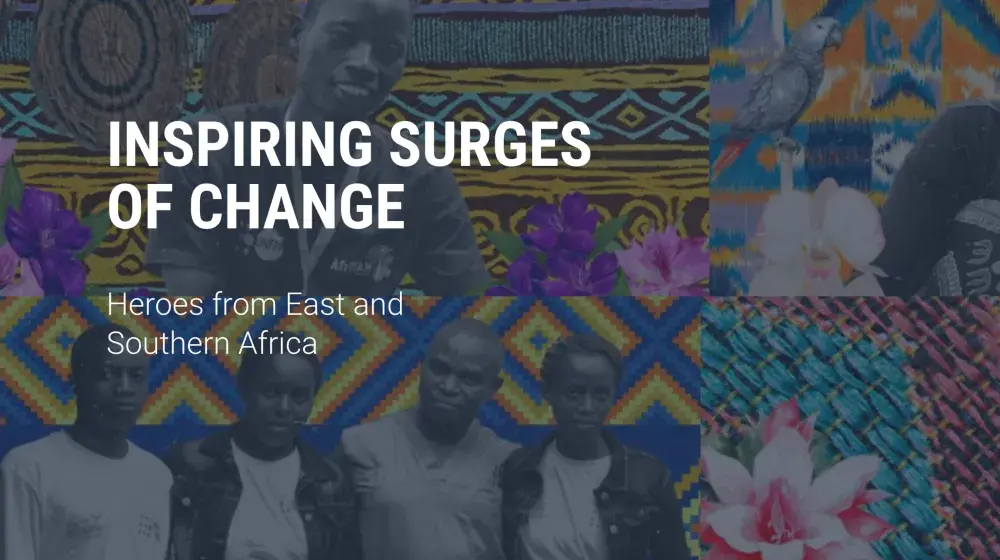Dr. Julitta Onabanjo, Regional Director, UNFPA’s East and Southern Africa region
Recently, a 14-year-old girl from Kakamega County in Kenya gave birth to a set of triplets, fathered by a boy aged 16. The phenomenon of children having babies is not limited to Kenya; it occurs in many African countries.
Fifteen-year-old Ida, from Mozambique, became pregnant when she was 13 years old while 25-year-old Mariel, from Madagascar, got pregnant when just 13 years.
Each year, 7.3 million girls under the age of 18 give birth in developing countries — of these, around 2 million are under 15.
As an African mother, I would not like my daughter, or niece – or any young girl, for that matter – to get pregnant at an early age, not just because it would compromise their life opportunities, but also because medically and psychologically, teenage pregnancy poses high risk for both the adolescent girl and her child.
The trend of children giving birth to children should not be allowed to continue. This is why UNFPA’s State of World Population 2013: Motherhood in Childhood, launched this week, addresses the challenge of adolescent pregnancy head on.
The social drivers of adolescent pregnancy in our society are well known. They include impoverishment, social marginalization and child marriage. Others are limited choices and opportunities in life, or inadequate access to sexual and reproductive health, including contraceptive information and services.
As the report notes, “Every day, 20,000 girls below age 18 give birth in developing countries,” most of them from lower-income rural households. Many of these girls are also nutritionally deficient.
Pregnancy has enormous consequences for a young girl. Broadly speaking, it alters the course of her life, seriously affecting her health, education and income-earning potential.
Pregnancy and childbirth are the leading cause of death for adolescent females in developing countries, resulting in 70,000 deaths annually. Likewise, health problems such as obstetric fistula are more likely if a girl becomes pregnant too soon after reaching puberty.
When girls leave school due to pregnancy or for any other reason, their economic prospects are jeopardised, while their opportunities in life might be severely truncated.
A call to action
Thus, addressing motherhood in childhood requires institutional and community responses, as well as individual commitment. Programmes that target the girl child need to take into account the broader social drivers of the problem.
For instance, we need to address the underlying factors of adolescent pregnancy, including gender inequality, poverty, sexual violence and coercion, child marriage, social pressures, exclusion from education and lack of job opportunities. We must also address the negative attitudes and stereotypes about adolescent girls that contribute to the problem.
An important area of concern is inadequate access to comprehensive sexuality education and youth friendly information and services where their privacy and confidentiality is maintained. Teenagers need to be fully informed on how to protect themselves from unplanned pregnancies.
Adolescents and young people also need holistic development, which focuses on creating a safe and supportive environment for accessing information, services and platforms for participation and advocacy.
Communities, including religious and traditional leaders, school authorities and social protection officers should work to protect the rights of girls in teen pregnancy and child marriage. This is where some of the conditions, norms, values and structures that perpetuate adolescent pregnancies can be changed.
Specifically, our boys and men should respect the rights of adolescent girls and not cajole or coerce them into sex. It is absolutely critical that our young people are enabled to protect themselves against sexually transmitted infections, especially HIV – the second main cause of death among young women in Africa.
And as so many adolescent girls die from unsafe abortions when choosing to terminate their unplanned pregnancies, they must be granted access to modern contraceptive and safe abortion services.
All said, our children should not be having babies. It is our collective duty to ensure that adolescent and young people achieve their full potential through quality education, health information and services, gainful employment and being protected from unplanned pregnancies and child marriage.
Now is the time to harness and invest into the resilience of our young people to achieve great dividend for the African continent.





